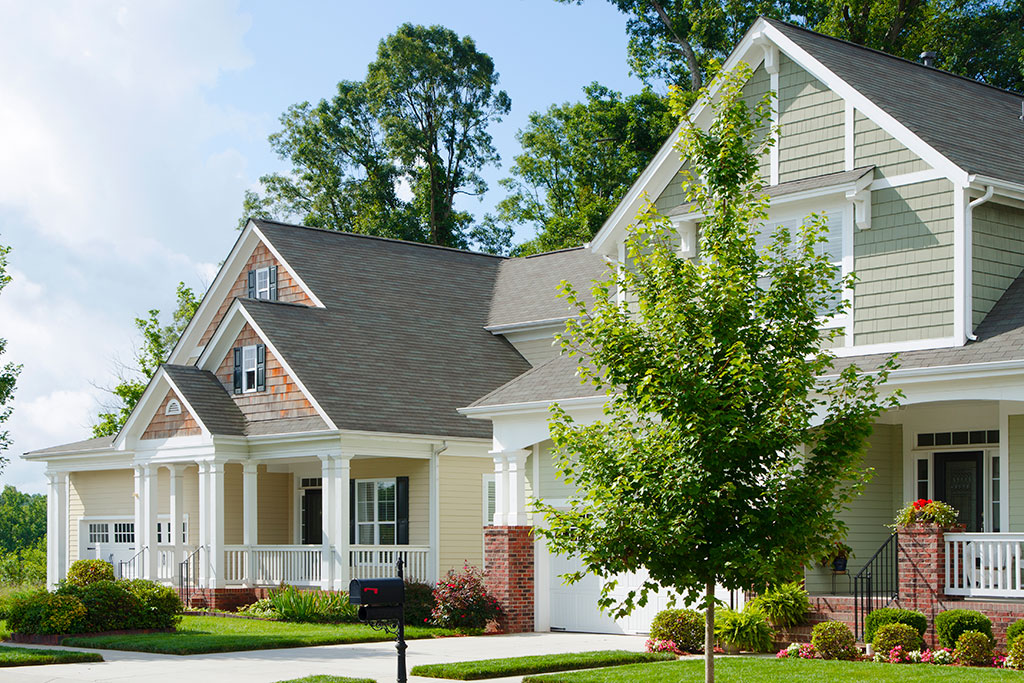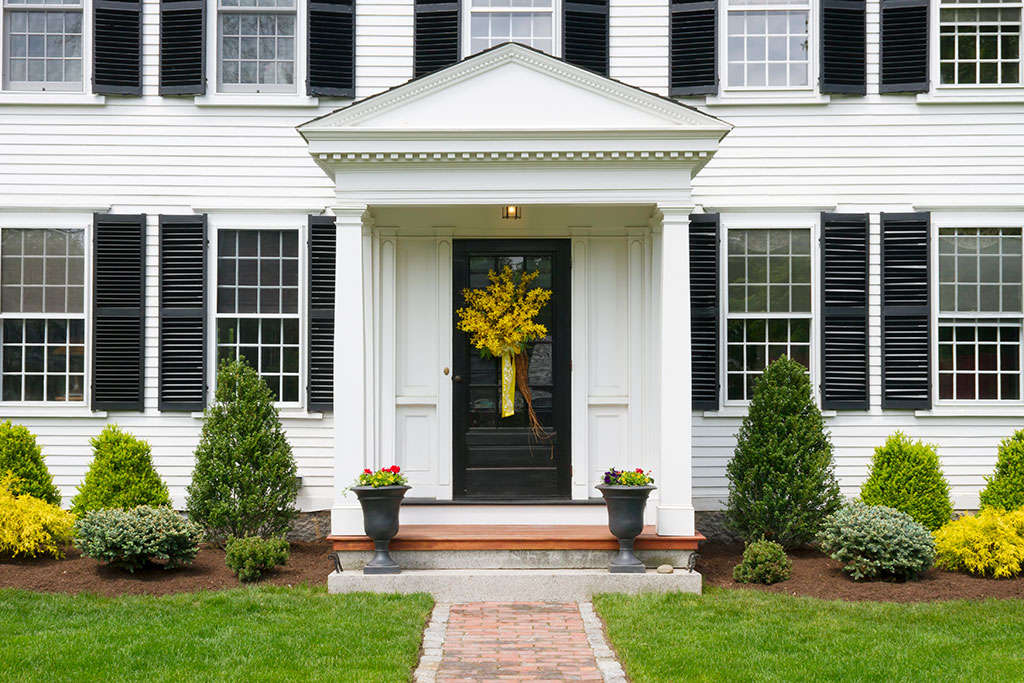A Guide to Exterior Painting
Among the various ways to transform your home’s curb appeal, painting stands out as a powerful and versatile option.
A fresh coat of paint can instantly revitalize your home, adding a touch of personal style and enhancing its overall appearance. However, before you pick up your brush or roller, make sure to take these key considerations into account.

Type of material
When it comes to painting the exterior of your home, it’s important to first take note of the type of material you’ll be working with. Not all surfaces are suitable for painting, and each has its own factors you’ll need to weigh.
Brick
Though painting brick can be tricky, it is still possible to do. Brick is a breathable material, meaning that any moisture it absorbs can easily evaporate. Painting adds a layer over it that could trap moisture instead, leading to water damage. So if you do choose to paint brick, you’ll want to use a breathable paint designed for it that contains silicate or is mineral based. Also, make sure you’re committed to the look and the color; once brick is painted, it can be challenging, if not impossible, to revert the material to its original appearance.
Vinyl
Vinyl siding can be painted, but only if you use the right paint and techniques. This material expands and contracts with temperature changes, potentially causing the paint to crack or even peel off entirely if you don’t take the necessary steps. Luckily, most major paint retailers sell paints specific for vinyl siding, which contain acrylic and urethane resins that adhere better to the material and accommodate its expansion and contraction.

Wood
Wood siding generally should be painted to help the material stand up to the elements. The paint forms a layer of protection that can better prevent dry rot, which can be costly to repair. You’ll just want to first use an oil, latex, or stain-blocking primer to ensure the longevity of the paint.
Stucco
Both traditional and synthetic stucco can typically be painted, but it’s crucial to ensure yours is in good condition by repairing all cracks and damage beforehand. Like brick, stucco is a breathable material, so you’ll need to use an acrylic-latex paint specifically designed for it to allow for proper moisture evaporation and prevent future issues.

Neighborhood aesthetic
When choosing a paint color for your home’s exterior, you’ll want to take your neighborhood’s overall aesthetic into consideration, especially if you’re part of a homeowners association that enforces color restrictions or requires approval for exterior work. For instance, if the majority of the homes on your block are painted white, opting for a vibrant green or yellow might cause your house to stand out in an unfavorable way. It could even potentially diminish its resale value since potential buyers may be deterred by the stark contrast. By aligning your paint choices with the character of your neighborhood, you can ensure a harmonious blend while maintaining your home’s market appeal.
Sun exposure
As you’re selecting your paint, it’s crucial to think about the long-term effects the sun may have on it. Sunlight not only causes colors to fade over time but also influences how they appear on a day-to-day basis. For example, a south-facing home receives direct sunlight during midmorning or midafternoon, which can cause lighter paint colors to appear washed out. On the other hand, a north-facing home preserves true color representation, though because of the lack of sunlight, darker colors may look less appealing. Factoring in your home’s orientation and the impact of sunlight will allow you to choose a paint color that will withstand the test of time and maintain the desired appearance.

Gutters and shutters
Whichever color you select, consider painting your home’s gutters, shutters, and other trim work a complementary or contrasting color, such as a shade of black if you chose white for the exterior, to better help them stand out. This can also modernize the overall exterior and give it a lot of character. Conversely, if you have an unpainted home but maybe aren’t ready to take on the upkeep that comes with painting the entire exterior, you could just paint these features only. This is a relatively easy and cost-effective update that can go a long way toward improving your home’s curb appeal.
Adding a fresh coat of paint to your home’s exterior is an excellent way to breathe new life into its appearance. Consider consulting with a professional painter, who can help you better understand the necessary steps you should take to get your desired look without jeopardizing the integrity of the material.


















